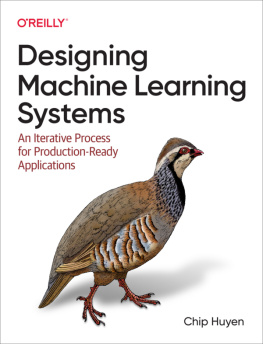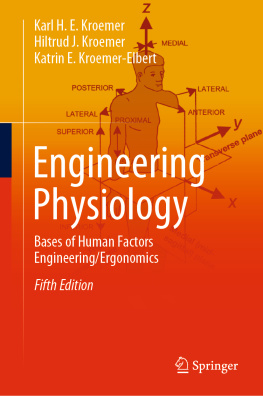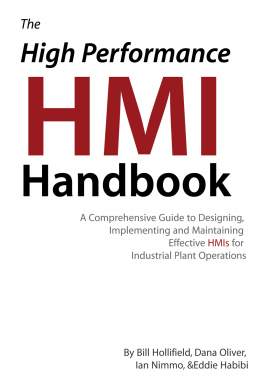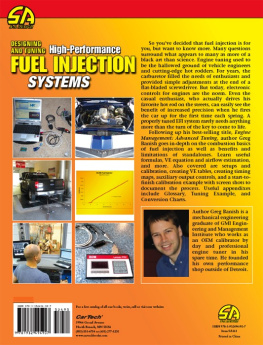Cecilia Berlin PhD - Production Ergonomics: Designing Work Systems to Support Optimal Human Performance
Here you can read online Cecilia Berlin PhD - Production Ergonomics: Designing Work Systems to Support Optimal Human Performance full text of the book (entire story) in english for free. Download pdf and epub, get meaning, cover and reviews about this ebook. year: 2017, publisher: University of California Press., genre: Home and family. Description of the work, (preface) as well as reviews are available. Best literature library LitArk.com created for fans of good reading and offers a wide selection of genres:
Romance novel
Science fiction
Adventure
Detective
Science
History
Home and family
Prose
Art
Politics
Computer
Non-fiction
Religion
Business
Children
Humor
Choose a favorite category and find really read worthwhile books. Enjoy immersion in the world of imagination, feel the emotions of the characters or learn something new for yourself, make an fascinating discovery.
- Book:Production Ergonomics: Designing Work Systems to Support Optimal Human Performance
- Author:
- Publisher:University of California Press.
- Genre:
- Year:2017
- Rating:5 / 5
- Favourites:Add to favourites
- Your mark:
- 100
- 1
- 2
- 3
- 4
- 5
Production Ergonomics: Designing Work Systems to Support Optimal Human Performance: summary, description and annotation
We offer to read an annotation, description, summary or preface (depends on what the author of the book "Production Ergonomics: Designing Work Systems to Support Optimal Human Performance" wrote himself). If you haven't found the necessary information about the book — write in the comments, we will try to find it.
Cecilia Berlin PhD: author's other books
Who wrote Production Ergonomics: Designing Work Systems to Support Optimal Human Performance? Find out the surname, the name of the author of the book and a list of all author's works by series.
Production Ergonomics: Designing Work Systems to Support Optimal Human Performance — read online for free the complete book (whole text) full work
Below is the text of the book, divided by pages. System saving the place of the last page read, allows you to conveniently read the book "Production Ergonomics: Designing Work Systems to Support Optimal Human Performance" online for free, without having to search again every time where you left off. Put a bookmark, and you can go to the page where you finished reading at any time.
Font size:
Interval:
Bookmark:
Production Ergonomics:
Designing Work Systems to Support Optimal Human Performance
Cecilia Berlin, PhD & Caroline Adams, MEng
]u[
ubiquity press
London
Published by
Ubiquity Press Ltd.
6 Windmill Street
London W1T 2JB
www.ubiquitypress.com
Text C. Berlin and C. Adams
First published 2017
Cover illustration by Camia Pia Pettersson
Cover design by Amber MacKay
Printed in the UK by Lightning Source Ltd.
Print and digital versions typeset by Siliconchips Services Ltd.
ISBN (Paperback): 978-1-911529-12-5
ISBN (PDF): 978-1-911529-13-2
ISBN (EPUB): 978-1-911529-14-9
ISBN (Mobi): 978-1-911529-15-6
DOI: https://doi.org/10.5334/bbe
This work is licensed under the Creative Commons Attribution 4.0 International License (unless stated otherwise within the content of the work). To view a copy of this license, visit http://creativecommons.org/licenses/by/4.0/ or send a letter to Creative Commons, 444 Castro Street, Suite 900, Mountain View, California, 94041, USA. This license allows for copying any part of the work for personal and commercial use, providing author attribution is clearly stated.
The full text of this book has been peer-reviewed to ensure high academic standards. For full review policies, see http://www.ubiquitypress.com/
Suggested citation:
Berlin, C and Adams C 2017 Production Ergonomics: Designing Work Systems to Support Optimal Human Performance. London: Ubiquity Press. DOI: https://doi.org/10.5334/bbe. License: CC-BY 4.0
To read the free, open access version of this book online, visit https://doi.org/10.5334/bbe or scan this QR code with your mobile device: |
|
The authors would like to thank:
Professor Rikard Sderberg, director of the Area of Advance PRODUCTION at Chalmers University of Technology, for funding this book.
Chalmers University of Technologys Education Quality Improvement initiative, for funding the publishing of this book.
All the students in the production ergonomics and work design classes of 2013, 2014, 2015 and 2016 for inspiring this book and alerting us to typos, unclear wordings and suggesting additions to the book.
Caroline Dedering and Gubjrg Rist Jnsdttir for excellent support in researching the field of social sustainability.
Ann-Christine Falck, for sharing her knowledge, passion and experience of ergonomics and economics for the benefit of this book.
Caroline Dedering, Sandra Mattsson, Jonatan Berglund, Lars Medbo, Anna Dean and Maja Brring for proofreading sections of the book and providing feedback.
Associate professor Peter Almstrm at Chalmers University of Technology for being a great colleague and co-instructor in the course Production Ergonomics and Work Design, and for feedback on this books contents.
Thanks to our anonymous reviewers who during the publishing process supplied helpful advice that helped to shape this book towards its final version.
Thanks to all credited individuals, groups and organizations that kindly granted us permission to use their images as illustrations.
Massive thanks to the staff at Ubiquity Press for making this book better! We particularly thank our editor Samuel Moore for consistent, kind encouragement and a great deal of unwavering patience during the publishing process, and our copy editor Rebecca Mosher for sharpening the language and clarity of the text.
Finally, Cecilia would like to thank Caroline for jumping into the process of writing and structuring this book with much-appreciated skill, dedication, humour and patience.
Gothenburg, Sweden
December 29, 2016
Hello, and welcome to the wonderfully complex world of production ergonomics. This book is meant to introduce engineering students, particularly in the area of production engineering, to the huge potential of designing better industrial workplaces on the basis of a solid foundation of knowledge in ergonomics (the scientific study of human work), also known as human factors . We have aimed to do this in a way that is quickly accessible, comprehensive, and explained at various levels of detail depending on the engineers future working role. In a teaching context, this book is best used as a reference companion alongside analytical assignments, case studies or a practical workplace improvement project, where students are tasked with analysing the improvement potential of a workplace and then designing a solution. Using this book, we hope that we have made it easier for the reader to design workplaces that live up to various ergonomic best practices and guidelines for efficient, safe, healthy and effective work.
The book started as a course compendium at the Master-level course Production Ergonomics and Work Design at Chalmers University of Technology in Gothenburg, Sweden. It was tailored to the curriculum of that course and owes much of its structure and contents to 1) the practical, project-based needs of its students, and 2) the Swedish/European context. While developing the course compendium into a book, we have done our utmost to increase the international perspective and to alert the reader to the different roles which may find different aspects of workplace design particularly valuable for their day-to-day job. We also hope that this will help the reader realize that workplace design is a team effort and that the contribution of different roles are needed to build and maintain a well-functioning, healthy and coherent work system.
Designing, building and evaluating production workplaces is a complex skill set that requires a gradual acquisition of knowledge about human needs and prerequisites, critical and creative thinking and methods, and knowledge about societal drivers that shape future demands on production workplaces. Letting these skills mature together and inform each other is what separates a masterful, proactive workplace designer from one who is limited to checklists and fire-fighting. The authors hope that this book will help to show how each of the areas in it are interconnected, with the human workers capability, limitations and requirements at its nexus.
Humans are able to perform fantastic feats when they are prepared, supported, content, trained, focused and at their physical and mental best. At other times, they may also be limited in their performance because they are fatigued, bored, injured, confused, discontent, physically weak, demotivated, elderly, beginners the list of considerations is long. So to make future workplaces more robust, it is necessary for an engineer to learn how to design for the range of how very different human workers needs and abilities can be. We hope that our readers will realize that some human performance aspects are so nuanced and dynamic that building flexibility into your system to support individual variation becomes a good investment.
The primary audience of this book is budding workplace designers particularly engineering students who may someday be responsible for the design, work organization and layout of factory-level production environments. For that audience, the book tries to cover basic knowledge of human needs, including physical, cognitive and social prerequisites for performing work, and then moves on to methods for successfully implementing, running and evaluating work systems. For the benefit of this audience, the book is organized into two parts in order to approach the subject from an inside looking out perspective. Engineering the System around Humans moves on to analysis and design methods, tools and skills, and zooms out to macro perspectives of economy, society and social sustainability. Just to keep reminding ourselves of the relevance to engineers, each chapter begins with a short reflection called Why do I need to know this as an engineer?, to describe how that knowledge may be valuable and help the workplace designer avoid pitfalls of missing something in their design considerations.
Font size:
Interval:
Bookmark:
Similar books «Production Ergonomics: Designing Work Systems to Support Optimal Human Performance»
Look at similar books to Production Ergonomics: Designing Work Systems to Support Optimal Human Performance. We have selected literature similar in name and meaning in the hope of providing readers with more options to find new, interesting, not yet read works.
Discussion, reviews of the book Production Ergonomics: Designing Work Systems to Support Optimal Human Performance and just readers' own opinions. Leave your comments, write what you think about the work, its meaning or the main characters. Specify what exactly you liked and what you didn't like, and why you think so.











